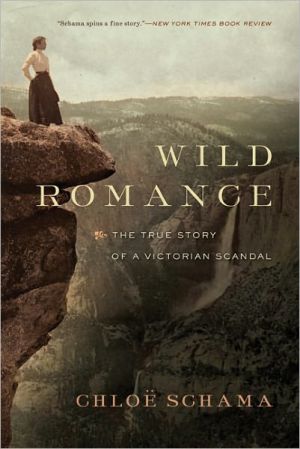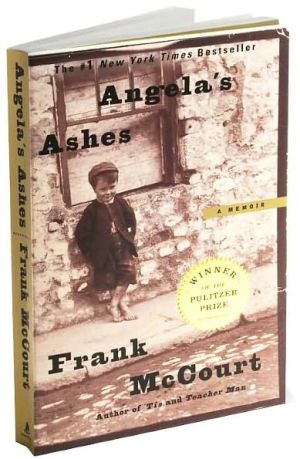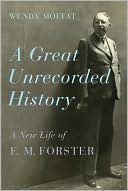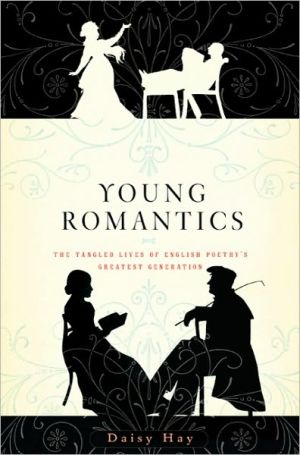Wild Romance: A Victorian Story of a Marriage, a Trial, and a Self-Made Woman
What started as a friendly conversation between a young girl, Theresa Longworth, and an army officer, William Charles Yelverton, on a steamer bound from France to England in 1852 would culminate nearly a decade later in one of the biggest public scandals the era had witnessed, with enormous implications for society at large. Seized upon by the Victorian press, the trials to legitimize Longworth's marriage to Yelverton before the law courts of Ireland, Scotland, and England brought to the fore...
Search in google:
What started as a friendly conversation between a young girl, Theresa Longworth, and an army officer, William Charles Yelverton, on a steamer bound from France to England in 1852 would culminate nearly a decade later in one of the biggest public scandals the era had witnessed, with enormous implications for society at large. Seized upon by the Victorian press, the trials to legitimize Longworth's marriage to Yelverton before the law courts of Ireland, Scotland, and England brought to the fore several of the most disconcerting matters in the Victorian era: the inadequacies of female education, prejudice against single women, and problems with marriage law. When Theresa Yelverton emerged victorious from her legal battles, she was paraded through Dublin's streets like a queen. Her victory, though, was short-lived, as she learned that life as a single woman—even the life of a well-known writer and traveler, as she became—would always be hard. Theresa Yelverton became an unwitting harbinger of the turmoil of her era and evoked timeless fears and fascinations: the fantasy of romance, the grip of obsession, the plight of unrequited love, the fear of abandonment. Chloe Schama brilliantly recaptures an ordinary woman caught up in an extraordinary affair, catapulted into fame and notoriety, forcing her society to confront some of its most unsettling issues. Library Journal Freelance journalist Schama, daughter of esteemed historian Simon Schama, undertakes a nonfiction debut most writers only dream about. She stumbled upon a page-turning topic in a footnote to an article on Wilkie Collins's Man and Wife, a novel based on a real-life episode. Her retelling of the history of one of Victorian England's most notorious scandals reads like a novel itself (the more so because she does not provide endnotes or a bibliography), detailing every aspect of the bigamy trial of William Charles Yelverton, which dominated the front pages of Irish, Scottish, and British newspapers in 1861. Although the story of Yelverton and his first wife, Theresa Longworth, practically tells itself through court documents, letters, and public opinion, Schama adds a journalist's touch in her story development. The latter part of the book deals with Theresa's later life in America as a self-made woman still haunted by her past. VERDICT History buffs and those who enjoy a good, old-fashioned scandal will find charm here, but it will not be as useful to serious students or specialists.—Suzan Alteri, Wayne State Univ. Lib., Detroit
Wild Romance\ A Victorian Story of a Marriage, a Trial, and a Self-Made Woman \ \ By Chloë Schama \ Walker & Company\ Copyright © 2010 Chloë Schama\ All right reserved.\ ISBN: 978-0-8027-1736-8 \ \ \ Chapter One\ Sunrise\ Love, which is but an episode in a man's life, is the entirety of a woman's. -Madame de Staël\ Somewhere, across the silver plane of dimpled water, a ship sounded its horn, and another answered. Theresa Longworth, the teenage daughter of a Manchester silk manufacturer, stood on the deck of the steamer that was to take her from Boulogne to Dover and heard the echoing calls of distant vessels. Her sister Ellen, who had escorted her to the port, stood on the shore waiting for the ship to depart. Theresa was sad to go, reluctant to leave her sister and her husband, but it was time for her to return home to England.\ Although it was August, the air was damp, and Ellen perhaps began to think that her sister had underdressed. According to published reports, she wound a shawl into a ball and tossed the wadded cloth toward Theresa. As the fabric sailed through the air, it began to unfurl, spreading like a wisp of smoke. Theresa grasped at the cloth, but it slipped through her fingers and landed on the deck. The man who had been standing near Theresa reached down and picked it up. He had been watching the sisters, and now he introduced himself. His name was William Charles Yelverton, of the Royal Artillery. He came from an aristocratic Irish family, and he was twenty-eight years old. Yelverton would later claim that Theresa's foot had been stuck in the gangway, and that this was why her shawl had fallen, but he never denied restoring it to her shoulders.\ As the steamer moved away from the shore, the passengers who had crowded outside to wave goodbye went inside or wandered along the deck. Theresa and Yelverton remained where they were, talking through the night. The possibly indirect journey took a long time; according to Yelverton's later testimony, they left around seven in the evening and did not arrive until eight or nine the next morning. When rays of light finally pierced the mist and the chalky cliff s of Dover appeared, Theresa and Yelverton had crossed more than just the water separating En gland from the Continent; they had taken the first tentative steps down the path that turns two strangers into lovers.\ For Theresa Longworth and William Charles Yelverton, the 1850s would be consumed by their romance, the 1860s by its unraveling. The public disintegration of their relationship before the courts of Ireland, Scotland, and En gland would bring to the forefront several of the Victorian era's most disconcerting matters: the inadequacies of female education and upbringing, the struggles of and prejudice against single women, the inequalities of marriage and marital law. When their story became known, Theresa and Yelverton became unwitting emblems of the turmoil of their era at the same time that they evoked timeless fears and fascinations: the fantasy of infatuation, the grip of obsession, the plight of unrequited love, the despair of abandonment. They were ordinary people caught up in an extraordinary affair, forced to deal with the consequences of fame and notoriety, and forcing contemporary society to confront some of its most unsettling preoccupations.\ Little is known about Theresa's early life. She was born in 1833 in Chetwood, Lancashire, the youngest of six children born to the manufacturer Thomas Longworth and his wife, Anne, née Fox. Her mother died when Theresa was four, and Theresa was soon sent to an Ursuline convent in France where she was raised as a Roman Catholic. Thomas Longworth, her atheist, nominally Protestant, father, did not give much thought to his children's spiritual well- being or education, and he was more than happy for someone else to raise Theresa. Her maternal aunt had urged him to send Theresa to France, and he did not object.\ When Theresa was whisked away from Manchester in the late 1830s, she left a city that had been radically transformed in the de cades just before her birth. The shift had been catalyzed-in large part-by textile manufacturers like her father. Small-scale cloth production, which had always been a central component of the North's economy, was overtaken by industrial factories where steam-powered looms turned out lengths of fabric at rapid rates. The population of Manchester boomed, increasing by 45 percent between 1821 and 1831, and the city expanded to accommodate the masses. Working-class housing sprang up around the factories, while the middle classes stuck to the fringes. The grimy urban center was bisected by shop-lined thoroughfares, so that well-heeled Mancunians could pass through without confronting the lurking misery. Behind the shop fronts, some cottages barely remained standing. Resting on rotting beams, their facades were muddied by sooty stains and broken windows patched with oilcloth. Rooms were dark and damp as candles were too expensive to be carelessly used. Typhoid and cholera were rampant, and food was scarce.\ If the haphazard expansion of industrial cities masked the true conditions of the working classes from their more affluent neighbors, literature made their plight visible. Elizabeth Gaskell's Mary Barton: A Tale of Manchester Life was written, she said in her preface, to explain the lower classes to the middle. "The more I reflected on this unhappy state of things between ... the employer and the employed," Gaskell wrote, "the more anxious I became to give some utterance to the agony." Gaskell knew her stories of suffering would anger members of her husband's Manchester-based Unitarian congregation, but she cared little about preserving their complacency. Mere "hands"-as workers were called-became full-fledged people at the pen of writers like Gaskell. Her writing extended sympathy into the dark homes of hidden neighbors and ushered shabby characters into more luminous parlors.\ Not only did industrial novels march penurious wretchedness to the fore of literary works; they dramatized the effect of industrialization on women's lives. Unsupervised and in the company of their peers rather than male figures of authority, young women-who made up about half of all mill workers-gained a reputation for in dependence and relative sexual liberty. At the other end of the social spectrum, a few upper-class women benefited from the changing economic dynamics by assuming the responsibilities that men had, for the most part, previously held. "Business!" exclaims Shirley, the title character of Charlotte's Brontë's novel, "really the word makes me conscious I am indeed no longer a girl, but quite a woman, and something more ... I hold a man's position: it is enough to inspire me with a touch of manhood."\ Though Theresa came of age removed from this particular evolving sphere of England, she probably read the bestselling novels that emerged from Manchester and took some of the lessons of this literature with her. Workers and-more important for Theresa-women were not just mute specters in society; they had something useful to contribute. Their faculties were often untapped, but they ran deep. Her father's success had proved that hard work, dedication, and an in dependent will could bring great reward in this burgeoning society; Theresa knew that she possessed the same qualities.\ But what would achievement mean for a woman of Theresa's background? For most young women, the goal was marriage. Midcentury English girls' boarding schools did not promote many alternatives, equipping their students with competitive claws for the cutthroat marriage market, but little else. "Concealment and deception prevail at girls' school to a degree which the uninitiated would be slow to credit," wrote a critic in Fraser's Magazine. Girls at such schools, said one reform-minded individual, "are not educated to be wives, but to get husbands." When a young girl-in literature, for example, Elizabeth Barrett Browning's Aurora Leigh or George Eliot's Maggie Tulliver from The Mill on the Floss-did succeed in obtaining a bookish education, it was often through her own devices. Whether it was the substance or the expense (some schools cost one thousand pounds a year, double a nineteenth-century doctor's salary) that caused Mr. Longworth to reject a typical English boarding school for his youngest daughter, Theresa's education provided her with a different upbringing.\ Compared to their English counterparts, at least some of the French convents where young girls were educated encouraged intelligence. The convent schools were highly regulated and formalized places, but they were run by women who took their educational duties seriously. Their goal was to produce dutiful and pious young women, and intellect was seen as a natural complement to those attributes. Some convents even gave young girls rooms of their own, the treasure that Virginia Woolf yearned for de cades later. "The pleasantest thing that happened to me about this time," wrote George Sand in her account of her convent education, "was having a cell to myself ... Every thoughtful person needs times of solitude and reflection." Never mind that the room was deathly hot in the summer and bitterly cold in the winter (icicles formed on her ceiling); it was her own.\ Solitude was tempered by companionship that seemed less petty than relations in English boarding schools. Girls gathered daily for piano and dancing lessons, as well as more academic and practical pursuits such as history and house keeping. The students ran through the flagstone-lined alleys, whispered in the somber cloisters, skipped in the courtyards, and made up stories about the deep, dank cellars that honeycombed the ground beneath their feet. The nuns marched two-by-two through passages that vibrated with their chanting, and bolted the heavy doors behind them, sealing the girls in their sepulchral world. Isolation did not prevent small-scale social distinctions: "There was an aristocracy and a democracy in the convent, as in the world," wrote Sand. Nor did it eliminate lessons on the social gradations of attire. The choir sisters-those who chanted the Latin prayers-"lived like patricians; their robes were white, and they wore fine linen." The generally less well-educated lay sisters were more likely to recite prayer in the vernacular and interact with the outside world. They "worked hard, and their dark clothing was of a much coarser kind."\ When Theresa left the convent, she had not been fine-tuned to lure a man like her English- educated peers. Her education had been mixed in its content and character, but she did have a sense of her imagination, intellect, and in dependence. These qualities would prove essential as the ties of family-the central building block of Victorian culture and social life-were flimsy in the Longworth clan. Her five older siblings had scattered: her two older brothers (William and Jack) to Australia and New Zealand, her sister Sara to Wales, her other sister, Ellen, to France. Her brother Thomas seems to have severed his connection to the family by the time Theresa reached adulthood. Theresa stayed in touch with her sisters, but the family as a whole was held together by tenuous threads.\ Though the teenage Theresa could count on some financial support from her father, she was not able to ignore economic concerns. By the mid-1850s when Theresa returned to England, her father had amassed a considerable fortune, but she and the other children hardly benefited from his success. He kept his funds close and his affections closer. "There were disagreements between my father and his children during his lifetime," she later said; "they were of a serious character." Emotional and, to some extent, financial independence was not so much a choice as a necessity for Thomas Longworth's children.\ Despite her unique upbringing, Theresa now faced a common predicament: she had finished with formal education, did not want to live with her father, but was perhaps a shade too young and inexperienced to start a new family. There was a sense that Victorian girls, when they reached this posteducation, premarriage stage, would grasp at something larger than themselves to give them purpose. George Sand felt "a great yearning for love, and a void in [her] heart" when her education neared its end. She had read about devotion and felt ready to experience its transcending powers. "I needed to love some one or something that was not myself," she wrote. In order to punctuate the ambiguity of their transition to adulthood, many young women turned, unsurprisingly, to the idea of "matrimony in the abstract, not the man but any man," said the Scottish magazine Chambers's Journal of Popular Literature.\ Schooled in romance and steeped in a sense of their limited destiny, girls latched onto potential prospects. "Any person who will snatch her out of the dullness of her life and give her something to live for-in short, something to do," was an acceptable recipient for the attentions of an idle young woman, wrote Chambers's. Harriet Beecher Stowe, writing to her friend George Eliot about the dubious match made by Middlemarch's heroine, expressed her sympathy for the recurring predicament: "I understand that girls often make a false marriage and plight their faith to an unreal shadow who they suppose inhabits a certain body." Though Theresa did not quite fit the Chambers's or Middlemarch model, she fell prey to this fascination with a man and with marriage. When she met Yelverton on the steamer, she was adrift, purposeless. He gave her direction.\ The start of Yelverton and Theresa's relationship depended upon two improbable events: their initial meeting and Theresa's boldness in writing-almost a year after their introduction-to a man she hardly knew. In the spring of 1853, Theresa wanted to send a letter to her cousin John Augustus Longworth-known to her as "Alcide"-who worked as a government official in Montenegro. She knew that Yelverton, the man she had met on the steamer some months before, was stationed in the same area, and she thought he might provide a willing conduit for her letters to her cousin. Alcide-a nickname he had obtained while fighting in Caucasia-had been raised by her father and was, throughout Theresa's life, more like an older brother than a cousin. When she left the convent, at age seventeen, she even lived with him in London for a time rather than return to her father's home. Relations with her father had never been easy; Alcide often stepped in to provide advice and guidance when her father was absent or disinterested. Theresa may have contacted Yelverton out of genuine affection for her cousin, or she might have harbored fantasies of a reunion with the man in the military uniform. (The single woman, a contemporary wrote, was "always ready to succumb to the 'scarlet' fever"-the soldier in his redcoat.) What ever her motivation, she gained two correspondents from the request. Yelverton graciously delivered the letter and began his own exchange with Theresa.\ In these early days of her correspondence with Yelverton, Theresa was cavalier, but she studded her letters with portentous insinuations of the intensity of her feelings. "We may see another sunrise," she wrote that spring of 1853, referring to the first time they had witnessed the sun shining through the Channel mists. She made no promises, as her own movements were uncertain. She sailed between Naples, Tunis, Malta, Corfu, and Bosnia-a strange grand tour for a young woman, but Theresa embraced it. "I have made up my mind to turn savage; I am weary of civilization," she wrote. Perhaps she sensed a fellow roamer in Yelverton.\ Despite his current nomadic occupation, Yelverton descended from solid stock. He was the great- grandson of Barry Yelverton, an ambitious Irish liberal lawyer and politician who had made a name for himself by criticizing the British government's war with the American colonies, the penal laws that restricted Catholic participation in the Irish government, and the mercantalist restrictions upon Ireland. As Barry Yelverton's politics became more moderate, he was appointed to prominent positions: attorney general in 1782, then chief baron of the Irish court of the exchequer a year later. In 1785 he was elevated to the peerage, and made first Viscount of Avonmore of Derry Island, county Tipperary, in 1800.\ (Continues...)\ \ \ \ \ Excerpted from Wild Romance by Chloë Schama Copyright © 2010 by Chloë Schama. Excerpted by permission.\ All rights reserved. No part of this excerpt may be reproduced or reprinted without permission in writing from the publisher.\ Excerpts are provided by Dial-A-Book Inc. solely for the personal use of visitors to this web site. \ \
Contents Preface....................ixTimeline of Events....................xiiiChapter 1: Sunrise....................1Chapter 2: Pursuit....................25Chapter 3: Betrayal....................44Chapter 4: The Dublin Trial....................64Chapter 5: Vindication....................86Chapter 6: Appeal....................103Chapter 7: The Lady Traveler....................122Chapter 8: California....................145Chapter 9: The World....................169Chapter 10: Sunset....................187Epilogue....................205Acknowledgments....................213Notes....................215Image Credits....................237Index....................241
\ From the Publisher“Schama spins a fine story herself.”—New York Times Book Review\ “Chloë Schama gives Longworth Yelverton her due in insightful and entertaining style. She is a star on the rise.”—Town and Country\ “A nonfiction debut most writers only dream about … Chloë Schama’s retelling of the history of one of Victorian England’s most notorious scandals reads like a novel itself … history buffs and those who enjoy a good, old-fashioned scandal will find charm here.”—Library Journal\ “Schama breathes new life into the story of one woman’s dogged determination to salvage her tattered reputation and forge an independent life for herself in the aftermath of a publicly debated scandal and a failed marriage.”—Booklist\ “Schama tells Longworth’s story well, keeping a steady eye on the sources and placing her firmly within whatever extraordinary context she [Longworth] found herself.”—Bookforum\ “Chloë Schama will delight her readers. She writes with confidence and passion, yet with a sensitivity for her subject which is wonderfully appealing. I finished the book with regret, wanting more and impatient for a sequel.”—Amanda Foreman, author of Georgiana: Duchess of Devonshire \ “Wild Romance is a book that will take you for a whooping ride from the highlands of Scotland to the majestic beauty of Yosemite to the mystical power of Hong Kong Harbor. Our heroine, Teresina, is a woman who fights for a life of conventional marriage, yet in her struggle, discovers she is destined for much more. This is history that reads like quality, page-turning fiction. It is at once riveting and enlightening.”—Elin Hilderbrand, New York Times bestselling author of Barefoot and The Castaways\ “Bringing together a Victorian novelist’s reach and richness with the discerning intelligence of a twenty-first-century literary biographer, Chloë Schama creates a thrilling narrative that locates the themes of Victorian scandal and adventure within contemporary feminist values of courage and autonomy. Schama’s fine acrobatic grace enables her to tread the tightrope between the constraints of history and the wild romance of an unfulfilled life.”—Homi K. Bhabha, Anne F. Rothenberg Professor of the Humanities and director of the Humanities Center at Harvard University\ \ \ \ \ \ Library JournalFreelance journalist Schama, daughter of esteemed historian Simon Schama, undertakes a nonfiction debut most writers only dream about. She stumbled upon a page-turning topic in a footnote to an article on Wilkie Collins's Man and Wife, a novel based on a real-life episode. Her retelling of the history of one of Victorian England's most notorious scandals reads like a novel itself (the more so because she does not provide endnotes or a bibliography), detailing every aspect of the bigamy trial of William Charles Yelverton, which dominated the front pages of Irish, Scottish, and British newspapers in 1861. Although the story of Yelverton and his first wife, Theresa Longworth, practically tells itself through court documents, letters, and public opinion, Schama adds a journalist's touch in her story development. The latter part of the book deals with Theresa's later life in America as a self-made woman still haunted by her past. VERDICT History buffs and those who enjoy a good, old-fashioned scandal will find charm here, but it will not be as useful to serious students or specialists.—Suzan Alteri, Wayne State Univ. Lib., Detroit\ \ \ Kirkus ReviewsA journalist pursues an abandoned Victorian wife who turned her plight into a surprising career as a writer and world traveler. Schama stumbled on the scandalous story of Theresa Longworth Yelverton and her bigamist husband in a footnote about the origins of the Wilkie Collins novel Man and Wife. The several trials in Dublin and Edinburgh during the 1860s, which attempted to ascertain whether William Charles Yelverton had actually married Theresa or not before he married someone else, created enormous publicity at the time and challenged disparate laws governing marriage, especially between people of different faiths (she was Catholic, he was not). The two met on a steamer headed to Dover in 1852. Theresa was a 17-year-old convent-educated daughter of a Manchester silk manufacturer, and William was a 28-year-old Irish aristocrat in the Royal Artillery. After meeting, she boldly wrote to him a slew of fulsome correspondence that would later be used in the trials to discredit her. Schama chronicles their two marriage ceremonies, one informally performed in Scotland, the other in an Irish church, but neither had witnesses because Yelverton's family would not abide marrying a Catholic and he possessed a "labyrinth" of inheritance difficulties. Shortly thereafter, William married another woman, and Theresa appealed to the public prosecutor in Edinburgh. Throughout the various trials and appeals, Theresa became a public advocate of marriage-law reforms. She was portrayed as young woman corrupted by her French education and by novels, immodest and unfeminine in her bold assertions that women could enjoy productive pursuits. Restless and constantly seeking, she later wrote novels andautobiographical accounts of her travels to America, Southeast Asia and South Africa, among others. She was, writes Schama, "perhaps the first woman to turn unwanted celebrity into a journalistic advantage."A compelling footnote that could ignite interest in Yelverton's work. Launch events in Washington, D.C. and New York\ \








